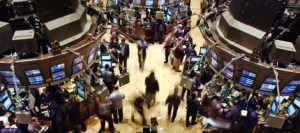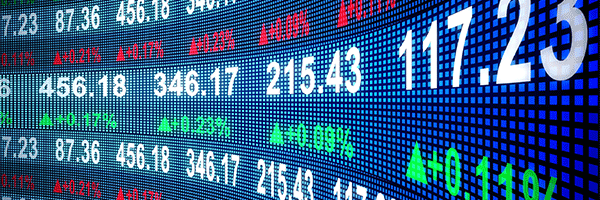
January 3, 2024 | BYDDF, Daily JAM, Jubak Picks, Top 50 Stocks, Volatility |
This change at the top of the electric car market was widely expected. The only debate was whether it take place in the last quarter of 2023 or early in 2024. Now, we know. With both Tesla (TSLA) and BYD (BYDDF) reporting fourth quarter delivery numbers in the last few days, the switch at No. 1 is now complete.

December 28, 2023 | Daily JAM, Jubak Picks, Mid Term, Morning Briefing, Top 50 Stocks, Volatility |
GREATER Growth Stock Pick #8: BYD (BYDDF). I know; I know. What’s a Chinese stock doing on this list? It’s here because BYD, not Tesla (TSLA) is the big growth story in electric vehicles and not just for this month–but for years. And because I can see two catalysts that are about to power this stock higher. Morningstar calculates that BYD is 20% undervalued right now. Because this is a China stock we’ll need to take a deep look at valuation later in this post. But first, the growth story.

November 2, 2023 | Daily JAM, Morning Briefing, Volatility |
Whew. Glad that’s done with. No more worries about rising interest rates or higher bond yields. No more fretting over lower earnings and revenue guidance for the fourth quarter and 2024. No more nightmares about a wider Middle East war. Or a government shutdown on November 17. Or…
Well, you get the idea.
I don’t think any of these things are behind us. The rally of the last day and a half–I’m writing this at 1 p.m. Nw work time on Thursday–is a product of a little bit of possible good news from the Fed and from the U.S. Treasury (on a small reduction in the size of the next Treasury auction) and a temporarily oversold market resulting from a lot of bad days in a row. I’m not saying this is just a dead cat bounce (you know the image–even dead cats bounce, but they don’t bounce far). Good news from Apple (AAPL) on earning and revenue after the close today. And tomorrow’s jobs report for October could be weak enough to keep the “Fed is done” narrative going without being so weak that it resurrects fears of an economic slowdown.

October 24, 2023 | AAPL, ALB, CAT, Daily JAM, DE, Dividend Income, DUK, F, GM, Jubak Picks, Mid Term, NI, SCCO, Short Term, Special Reports, Top 50 Stocks |
I’ve hi-lighted the key characteristics of the coming global debt bomb explosion that investors MUST include in any plan to protect a portfolio from the explosion of this bomb.

October 9, 2023 | Daily JAM, GDX, GLD, Jubak Picks, Volatility |
Gold was up 1.9% in trading on COMEX today to $1876 an ounce on war in Israel and Gaza and fears that it would become a wider conflict in the region. I’ve been looking for an exit from two of my gold positions for a while now. And tomorrow is a good exit point, I think.

October 3, 2023 | Daily JAM, Short Term, Volatility |
The VIX, the CBOE S&P 500 Volatility Index, climbed another 12.32% today, October 2, to 19.78. The Call Options–with a strike at 17 and an expiration on December 20–I bought on the VIX on September 25 are up 38% as of the close on October 2. (I hold them in my Volatility Portfolio.) I’m inclined to hold them a bit longer because:

October 2, 2023 | Daily JAM, NVDA, Volatility |
I’m going to take advantage of today’s pop in Nvidia (NVDA) to sell the shares out of my very short-term Volatility Portfolio tomorrow, Tuesday, October 2. The shares closed up at the close today at $447.82, a gain of 2.95% on the day. I initiated the position in the Volatily Portfolio on Mach 25, 2023. It was up 66% as of the close today So why sell Nvidia here?

September 26, 2023 | AAPL, ADBE, ALB, AMAT, EUM, GOLD, LAC, Morning Briefing, MSFT, NVDA, PILBF, RWM, SCCO, Short Term, Special Reports, UUP, Volatility |
So what do you do with your portfolio for the rest of 2023? And what’s your best strategy to be prepared for 2024? In Part 1 of this Special Report I laid out the 10 developments that I thought would drive the financial markets for the rest of 223 and into 2024. Today, in Part 2, I’m going to give you the first 2 of 10 moves to take–with as much detail and as many specifics as possible–that you should be making now to position your portfolio for the uncertainties of the last quarter of 2023.

September 20, 2023 | Daily JAM, Volatility |
The CBOE Volatility Index, which measures short-term volatility in the Standard & Poor’s 500 stocks, has been stuck below its long-term average of near 17 since the regional bank crisis of March 2023. In recent months, the VIX has had a hard time breaking above 17 with the index spending most of its time down about 15. Today, at 1 p.m. New York time, the VIX was at just 14.01, down 0.71% ahead of the Federal Reserve’s interest rate decision. There’s just no fear in this market. So it will extremely interesting to see if today’s interest rate decision and the release of new Dot Plot forecasts for interest rates, inflation, economic growth, and unemployment today from the Fed has any effect of market complacency.

September 7, 2023 | Daily JAM, Jubak Picks, USO, Volatility |
Tomorrow September 8, I’m selling shares of U.S Oil Fund (USO) out of my Jubak Picks ad Volatility Portfolios to take profits on the 25% really in oil since June and to raise some cash in case September volatility delivers a bargain or two.

June 28, 2023 | Daily JAM, LNG, UNG, Volatility |
Today’s video is The Long Hot Summer and Natural Gas. If you’ve been following the weather, you know about the huge heat bubble in Texas where temperatures have reached 120 degrees. High temperatures combined with humidity of around 80% can cause serious health problems and even death. The National Weather Service expects this weather to continue and to spread to other parts of the United States, resulting in more and more people staying inside with the air conditioning cranked all the way up. This spike in temperatures is creating a similar spike in natural gas prices. On June 26, we hit a 16-week high for natural gas prices, and July natural gas futures (for July delivery) have been up 14 out of the last 17 sessions. This price surge has two causes ad is operating on two time frames. In the immediate term, the increased air conditioning use stresses the grid, leading to a reliance on natural gas back-ups to supply the energy needed to cover these demand peaks. This, of course, creates a lot more demand for natural gas in the short term. The second thing is a surprising change in long-term thinking about the future of natural gas. I’m seeing a new wave of 20-year supply contracts from places like China and Japan, suggesting countries are thinking that natural gas has a longer future as a transitional fuel as the world moves toward more sustainable energy sources. The two stocks I would look at here are Cheniere Energy, (LNG) and United States Natural Gas Fund, (UNG). Cheniere is up 6% in the last month and is a good way to play the long-term trend in natural gas use. UNG hit a potential bottom in June and is up 16% in the last month. The bigger gain is a result of the ETF being hammered due earlier in the year. UNG is a far more volatile buy, with much higher risk, so if you’re uncomfortable with risk, stick with the more modest but more predictable gains from Cheniere.

June 27, 2023 | Daily JAM, GNRC, LNG, Volatility |
Heat advisories now stretch from northern Florida to southern New Mexico, and excessive-heat warnings have been issued for much of Texas and parts of New Mexico and Arizona and along the Gulf Coasts of Louisiana, Mississippi and Alabama. New Orleans is included in the zone of greatest heat risk, with actual air temperatures around 100 degrees and humidity that will push heat indexes to 115 degrees. Excessive-heat watches have been posted for the lower Mississippi Valley and include Memphis and Nashville; Huntsville and Birmingham; Jackson, Mississippi; Little Rock, Arkansas; and Poplar Bluff, Missouri. “Extreme heat and humidity will significantly increase the potential for heat-related illnesses,” cautioned the National Weather Service, “particularly for those working or participating in outdoor activities.” The heat will relent somewhat into early next week for portions of the Southeast and Mid-South, but there is no immediate end in sight for Texas, where blistering and brutal conditions look to continue as a heat doe lingers over Texas. And this is only the latest U.S. manifestation of a global problem.














